 Steve Henry is a man who likes to get his airplane off the ground in a hurry. A big hurry. We taxied out on the 5000-foot runway and lined up with a slight tailwind to avoid staring directly into the setting sun. He held the brakes and added a touch of throttle to lift the tail off the ground. Then he advanced the throttle on the 300-hp turbocharged Yamaha until it was clear the brakes and tires had had enough and weren’t going to stay glued to the pavement anymore. At that point he released the brakes, added full power, and we shot off the line like we’d been fired from a cannon! Before I could count to two, we were off the ground and climbing away at a phenomenal rate. As we passed the end of the runway, well above pattern altitude, Steve turned to me, smiled and said, “Next time around, I’ll show you a maximum-performance takeoff.”
Steve Henry is a man who likes to get his airplane off the ground in a hurry. A big hurry. We taxied out on the 5000-foot runway and lined up with a slight tailwind to avoid staring directly into the setting sun. He held the brakes and added a touch of throttle to lift the tail off the ground. Then he advanced the throttle on the 300-hp turbocharged Yamaha until it was clear the brakes and tires had had enough and weren’t going to stay glued to the pavement anymore. At that point he released the brakes, added full power, and we shot off the line like we’d been fired from a cannon! Before I could count to two, we were off the ground and climbing away at a phenomenal rate. As we passed the end of the runway, well above pattern altitude, Steve turned to me, smiled and said, “Next time around, I’ll show you a maximum-performance takeoff.”
I am still trying to wipe the grin off my face.
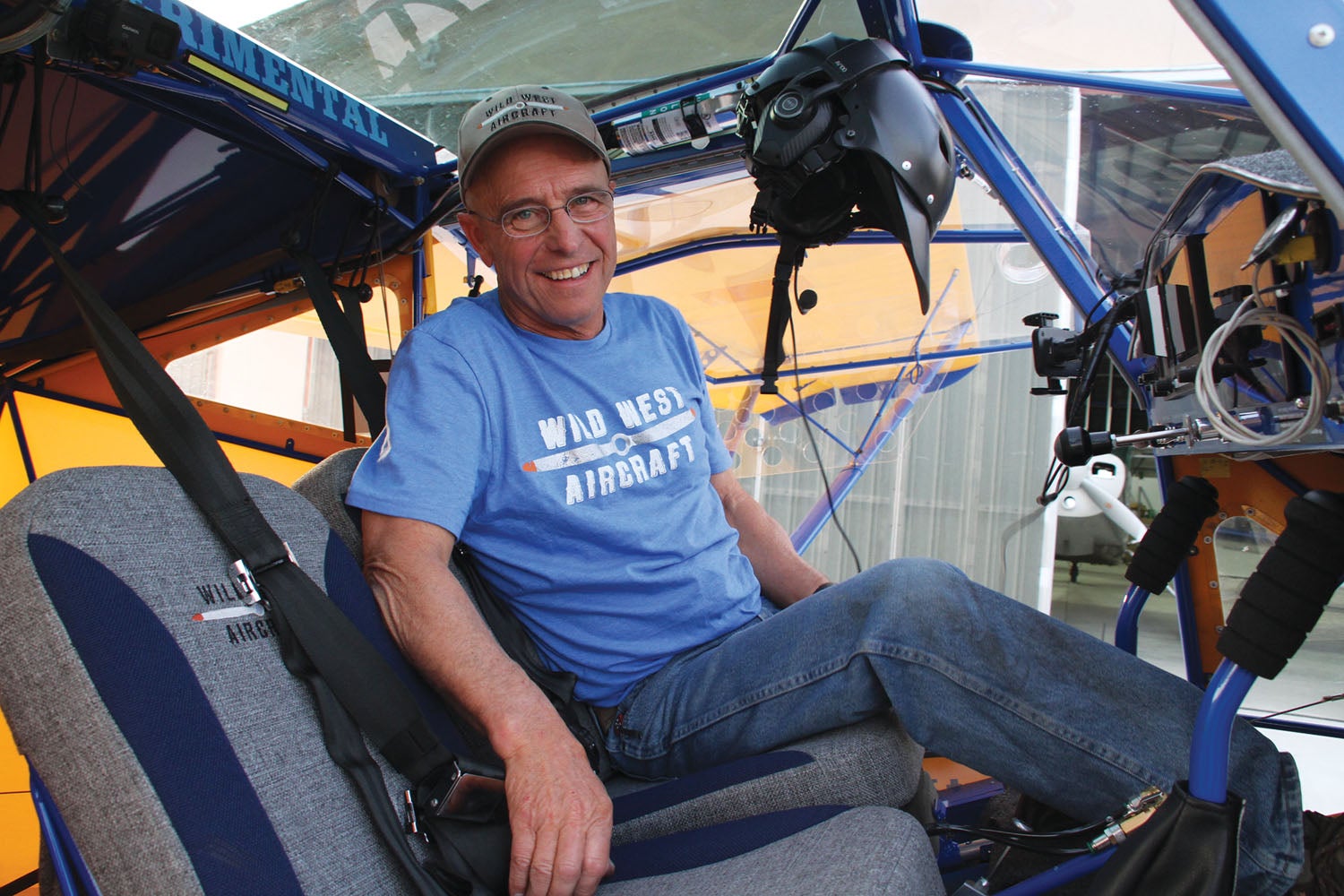
The airframe we were flying was Henry’s seventh build, a Just Highlander with more than a few modifications. It was also the LSA Reserve Grand Champion at AirVenture in 2019, an award won not only for workmanship, but for innovation. And innovative the airplane surely is. Oh, by the way, this was Henry’s second Reserve Grand Champion in a row—that’s two in consecutive years. The man not only has talent, he is consistent. This particular Highlander is far from stock, and we sat down with him to go over some of the mods and innovations that won him the Lindy—and more importantly, that make him a consistent winner in the world of STOL competition.
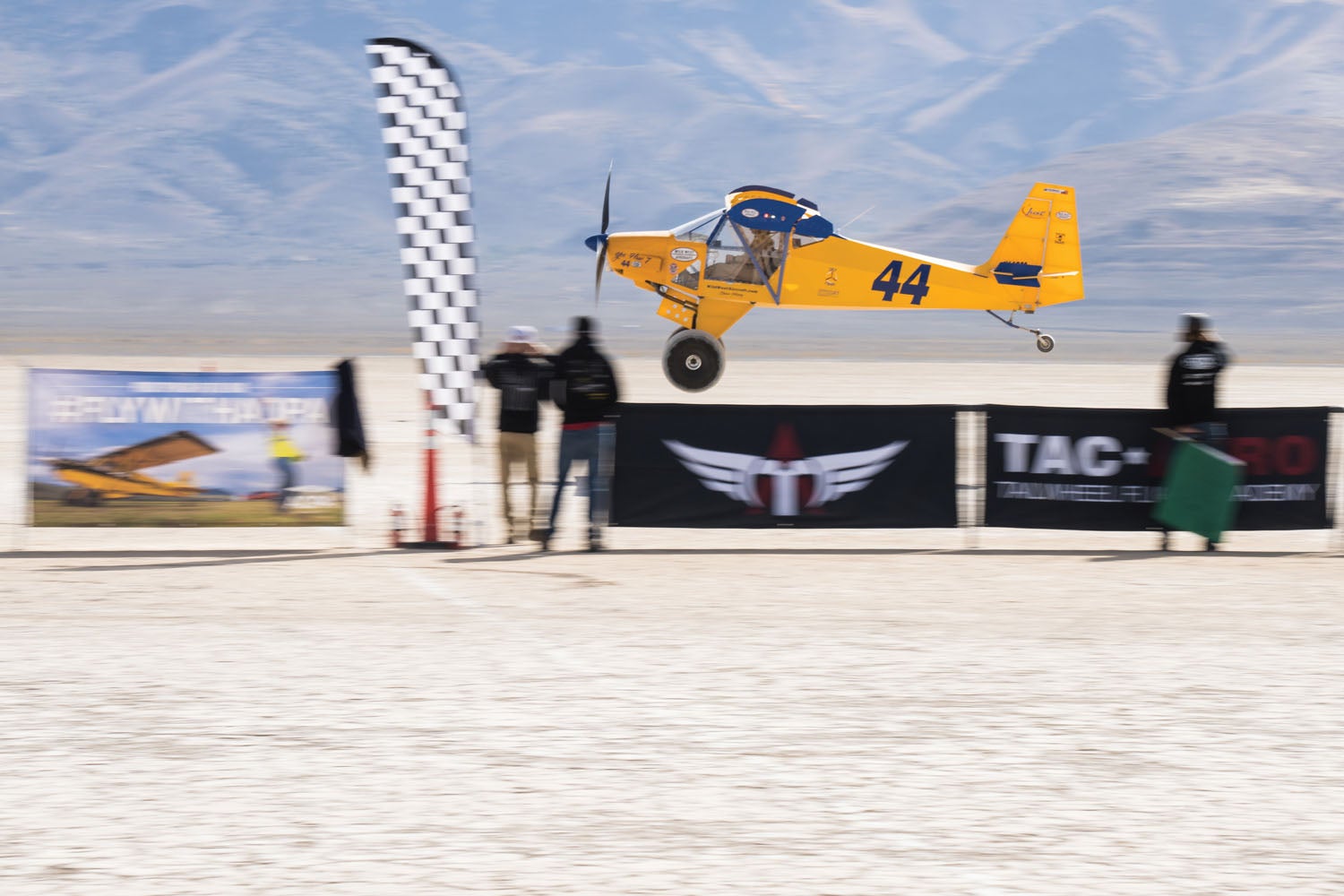
We got a chance to fly with him in the high desert just east of Carson City, Nevada, where he stopped on his way to the High Sierra Fly-in held in October each year. The High Sierra is a chance for backcountry pilots to get together on a dry lakebed north of Reno (you know it’s gotta be a great place to fly with a name like “Dead Cow Lakebed”) for several days of making dust fly and having fun fooling around with flying machines. Home of the STOL Drag races, the HSF is a rapidly growing event that this year saw over 120 pilots trying to qualify to compete in the drag competition itself—that’s a lot of airplanes looking to fly fast by going slow.
Steve Henry has been winning STOL competitions as well as the STOL drags with significant regularity, so we thought it was time to take a close look at his current machine and see if we couldn’t pry some secrets out of him. To our delight, he was more than willing to share—so here we’ll share some of the secrets of his success.
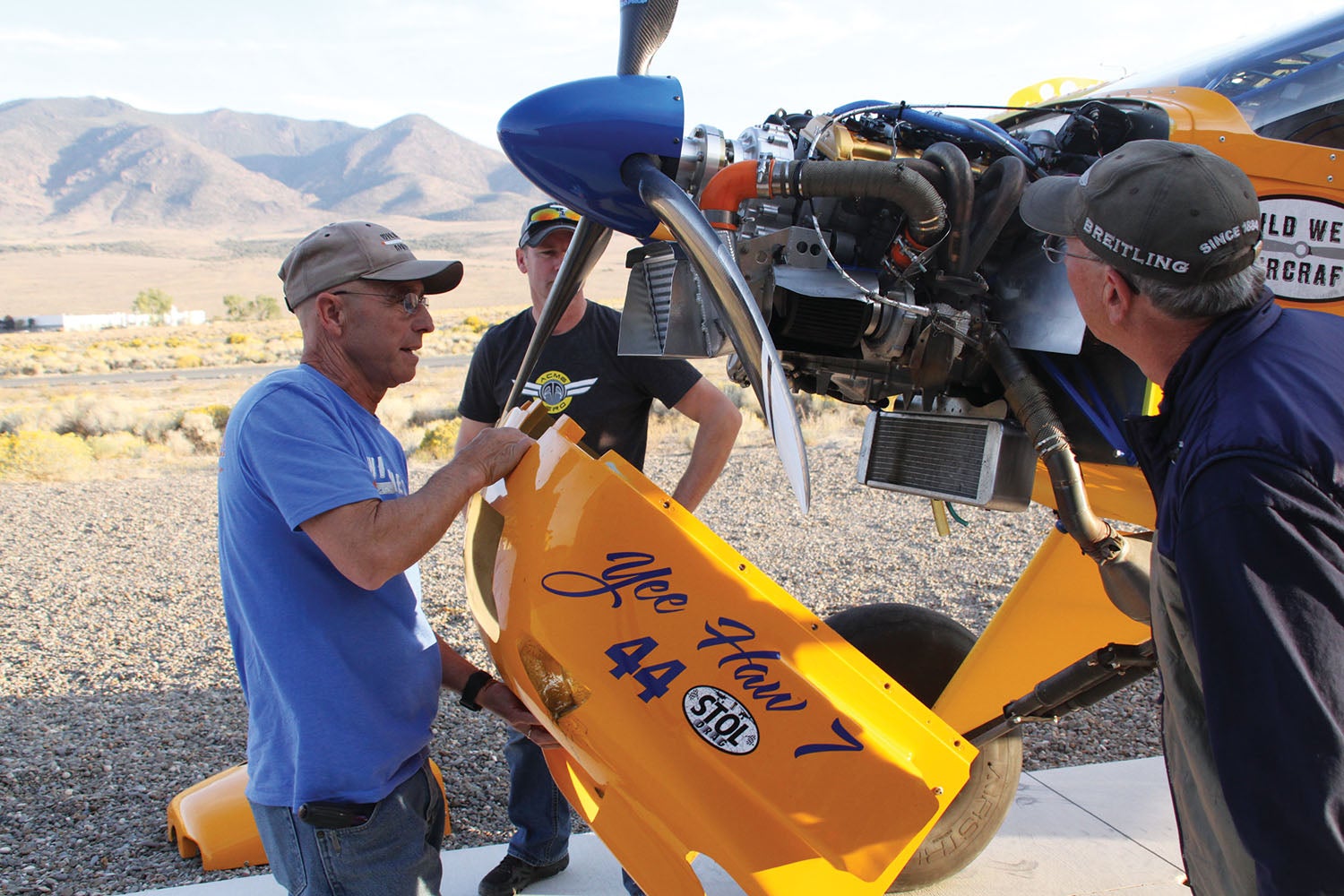
But First… How Does It Fly?
I’ve flown most of the representatives in the fast-growing, LSA-qualifying STOL airplane category in the past few years and have gotten used to the long climb over the bush wheels and the “hoisting yourself in” by doing a pull-up on the fuselage tube to settle into a seat from which you can see well out the sides. The Highlander known as Yee Haw 7 isn’t much different in that regard—until you start looking out the multiple windows at the view—even on the ground. No, you still can’t see straight ahead, but the modifications Henry has made to the glareshield and boot cowl, plus the addition of the little triangular windows down by your feet, give you a far better view of the world right from the start.
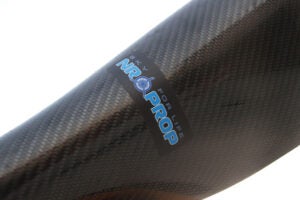
The large three-blade prop you stare at from the seat is a clue that this is going to be a different ride. Appropriately sized for something that starts with “Lyc” and ends with at least “360,” it’s a ground-adjustable, composite scimitar that is clearly sized to redistribute some significant horsepower. You get a hint of that with the startup—a low rumble that is supplanted by a whirring spool-up sound when the power comes in. Yeah, there’s something at the other end of the throttle cable.
An airplane designed for 100 hp is going to be different when you triple that figure, and it was clear right from the start that this machine could do just about anything the pilot asks when it comes to low-speed performance—and that includes getting up off the tailwheel and standing tall with just a small amount of throttle and enough brakes to keep you in place. Henry can basically make the airplane walk through the desert, turning a little here to make the right wheel go around a rock, then a little there to swing the tailwheel over a sagebrush. Control is not a problem when you’re doing it with power!
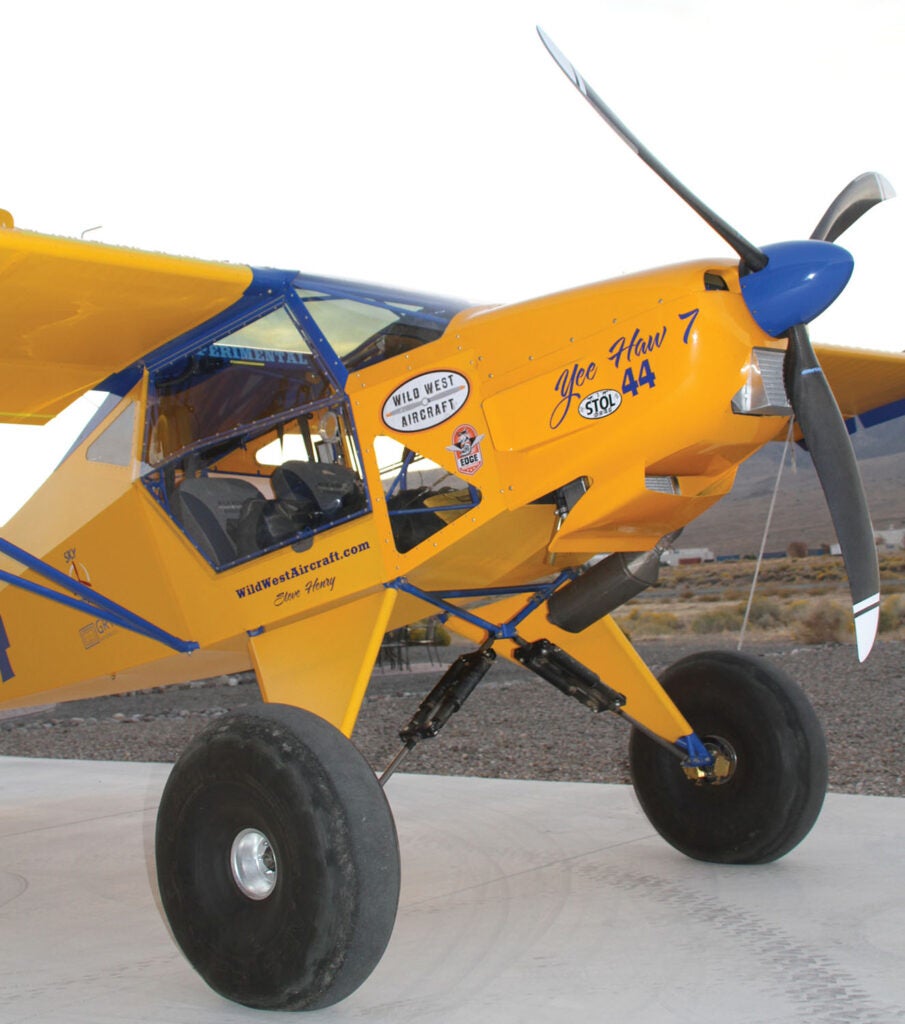
That power, of course, has to be respected, and one of the things Henry mentioned several times is that you can’t put a low-time pilot straight into the seat and expect them to safely use the airplane right off the bat. That much power in that light of a kite is a scaled version of the P-51’s tendency to torque roll if you go to full throttle without adequate airspeed to give the control surfaces something to bite into. Yes, you could easily wreck this thing if you’re careless with that black knob. However, learn to respect it and use the power when the other controls are ready, and you’ve got an amazing machine.
Due to insurance requirements and a healthy desire to learn by watching (rather than by making a mistake), we sat with hands in our lap while Henry rolled onto the runway, held the brakes and added enough power to get the tail up—which wasn’t much. He then added more, and more, and more—and when the brakes had had enough, he let them go, put in more power, and the result was acceleration on a scale I have rarely felt in an airplane, even one with a constant-speed prop! Yup—this thing just goes! And then it goes up! With two of us aboard, we probably used about two airplane lengths of the mile-long runway. Our airpark homeowner association board would be happy that we weren’t wearing out pavement.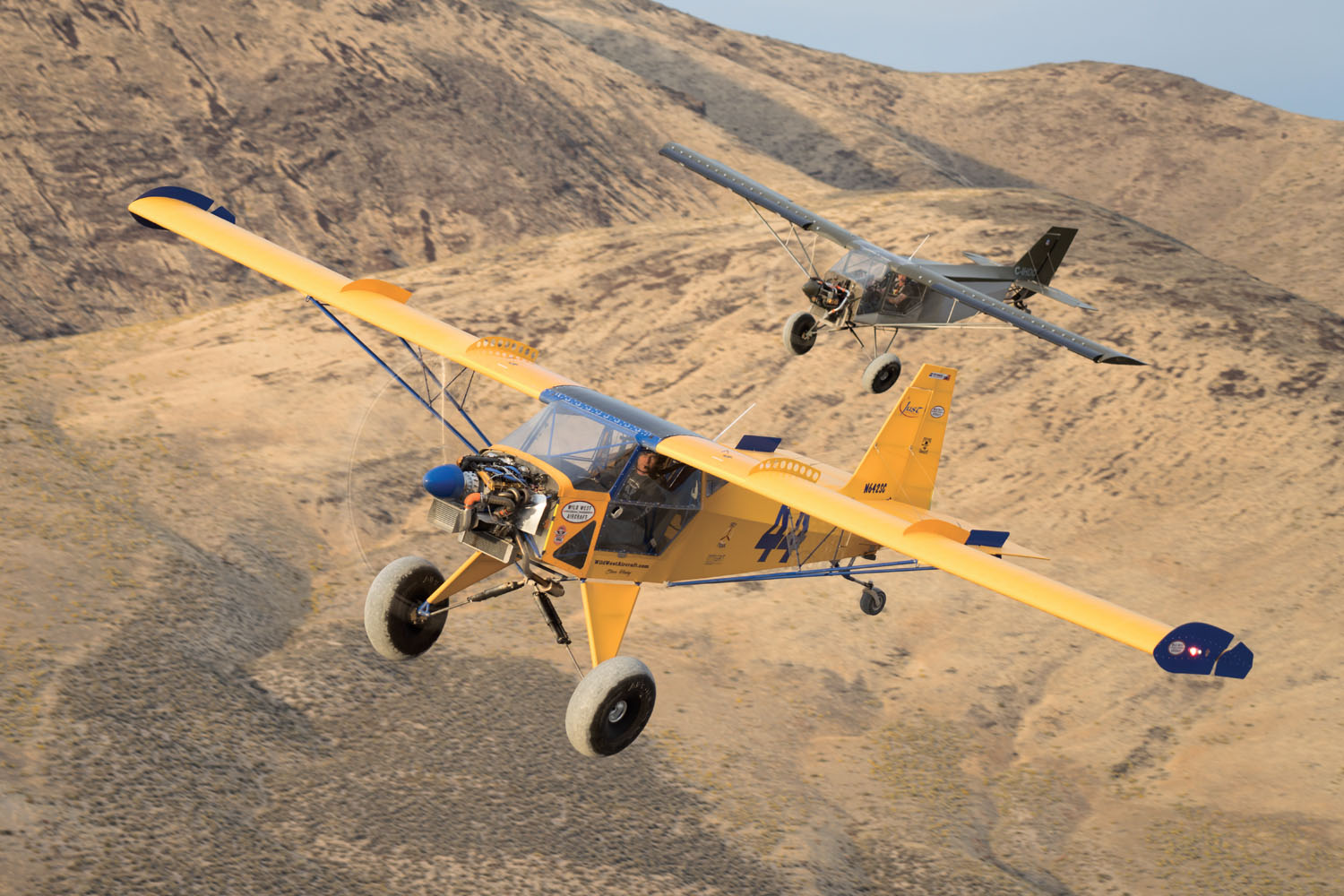
It didn’t take long to get up and away from the pattern, where we had only a few minutes before the sun was sinking into the surrounding mountains. This was just a demo sampler, not a full evaluation, but the airplane was well-mannered in turns, held altitude like it was on rails regardless of bank angle, and flew along easily with flaps up at 34 mph. To be honest, I don’t trust airspeed indicators to be accurate below about 35 and lump everything in that category as “adequately (or ludicrously) slow.”
We descended into the pattern for a couple of landings, and once again, it was clear that we had way too much runway for our needs. We landed and stopped the first time in the length of one of the underrun arrows, and Henry wasn’t the least bit overworked. He then said “Let me show you what the STOL Drag is all about.”
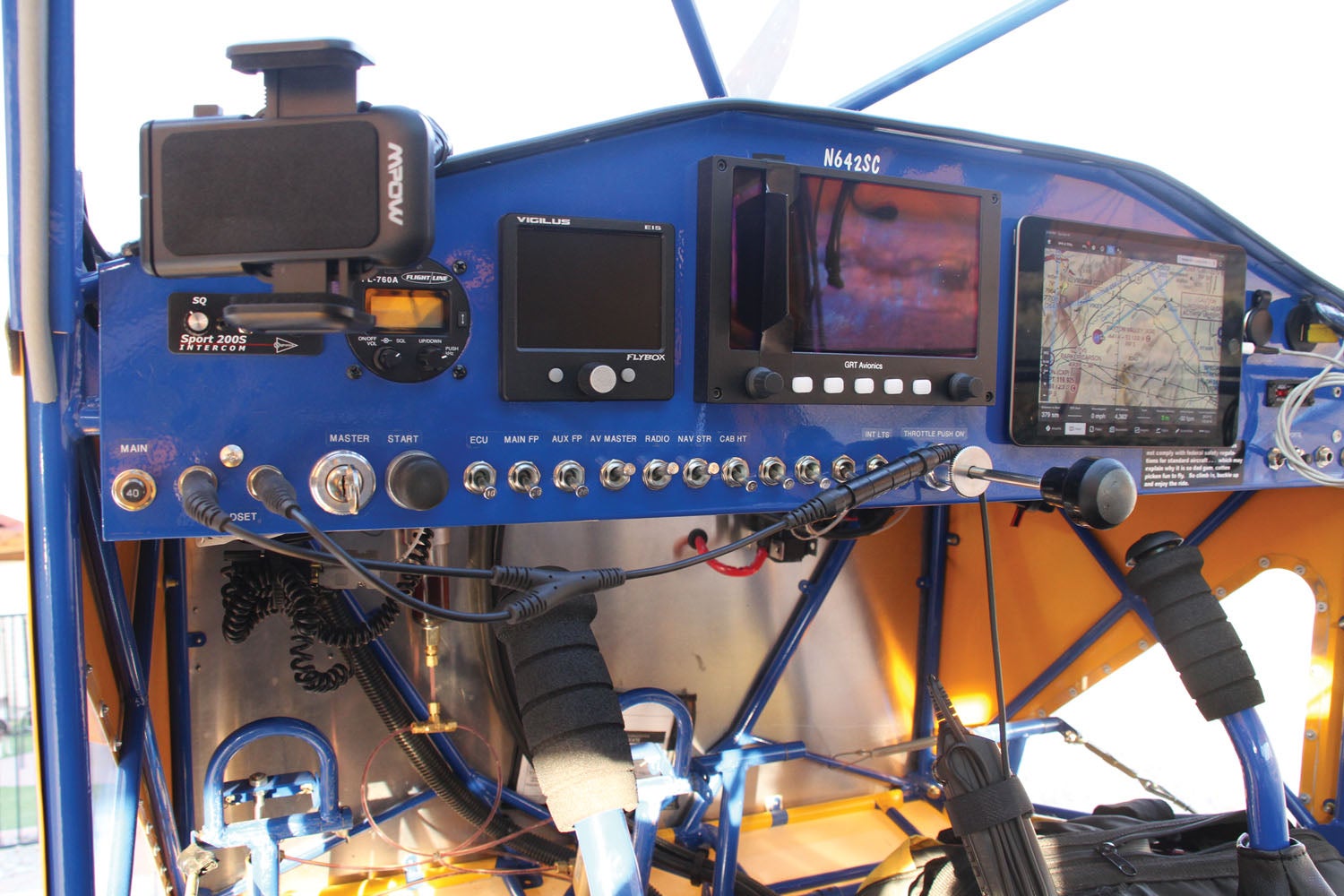
The STOL Drag is a race where you essentially get off the ground, fly about a thousand feet, land, come to a complete stop, turn around, and do it all again in the other direction. You do it side by side with another airplane and see who crosses the finish line first. It’s a test of an airplane’s ability to get airborne quickly, move through the air fast, and then get down and stopped as short and fast as possible.
Henry once again held the brakes and lifted the tail. The cat shot was even quicker than before, and we were off the ground in a wink. He leveled and shot forward with all 300 horses going to cover the distance, then pulled the power and threw the airplane sideways to slow things to landing speed as quick as he could. The landing was like watching a gymnast stick the dismount. Then he turned it around and was ready to go again in the opposite direction. But because this was a civilized runway, with a pattern favoring one direction, he instead pirouetted on the mains, and we took off in the direction we’d been going—all way faster than it took for me to write that.
Overall, I took away a far better understanding of what you can do with a low-speed airframe and lots of power. It’s a lot like those dreams where you’re flying without an airplane, just holding your arms out and moving over the trees, dropping a foot here and there to touch a meadow or tap on someone’s rooftop. Yeah—a guy could get used to having one of these machines just for playing around!
Power, Power, Power!
Henry, when asked about the winning performance of Yee Haw 7, admitted that while he has done a lot of little aerodynamic things along with the new wing, the real winning performance is probably due to the 300 hp provided by the EPeX300Ti Yamaha-based engine. Marry 300 hp to a Light Sport Aircraft and what else would you expect?
The motor is the work of Edge Performance, a Norwegian company that is represented in North America by Edge Performance of Lacombe, Alberta. The core engine is a four-cylinder inline Yamaha Apex snowmobile four-stroke, with five valves per cylinder. Edge Performance marries it to a gearbox designed by Teal Jenkins, and a turbocharger, making the 1000cc engine a powerful package in a small (and light) container.
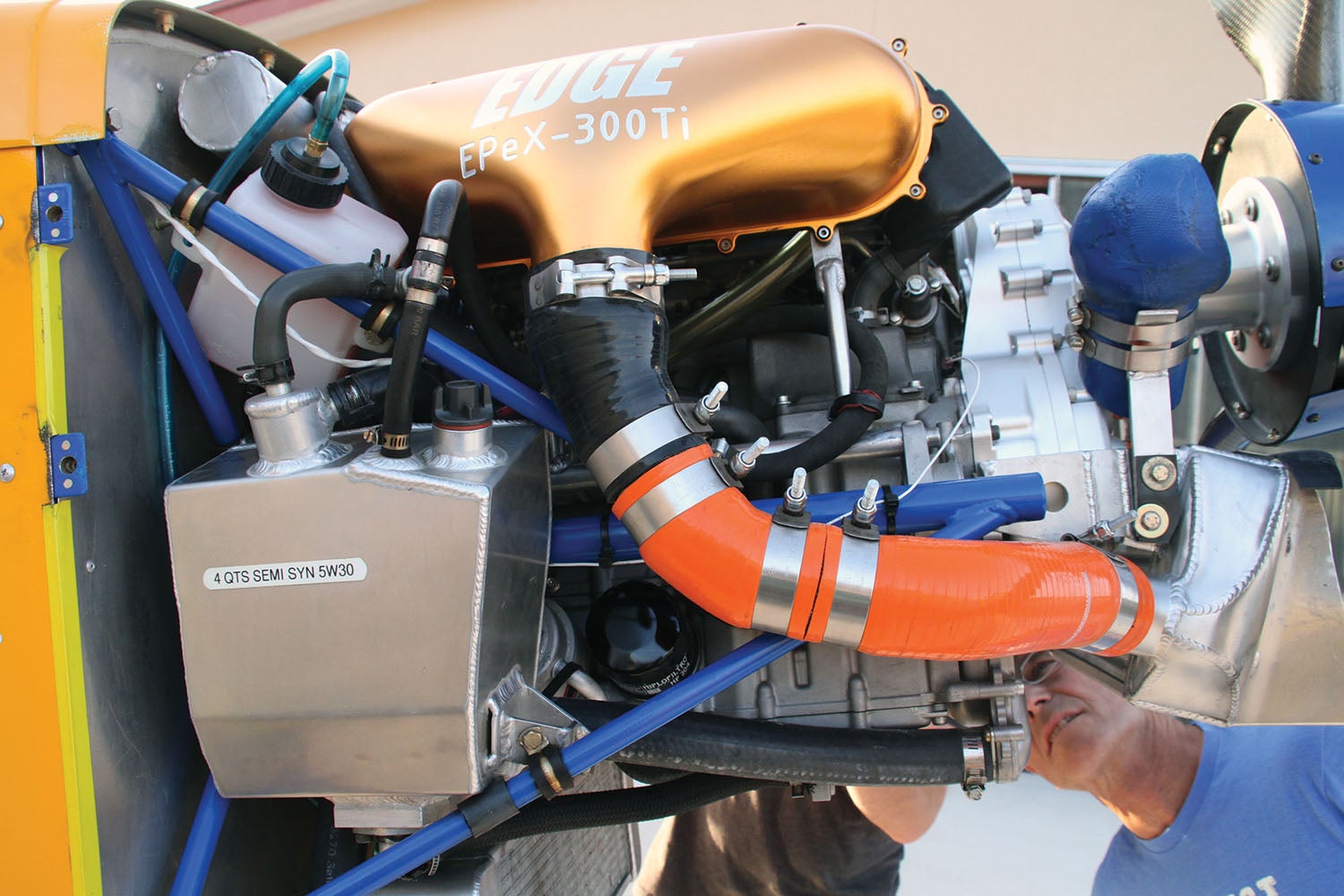
It might surprise the many owners and operators of Lycoming-powered aircraft that such a motor not only exists, but has been flying for a while now in non-turbocharged form. The fact that the Highlander hides the massively powerful motor under what looks to be roughly the same size cowling it uses for a Rotax is impressive. If it weren’t for the labeling and signage proclaiming the horsepower, the airplane would be a true sleeper if it pulled up next to you at the start line. With electronic fuel injection and ignition, it is a modern engine that so far is looking to be reliable.
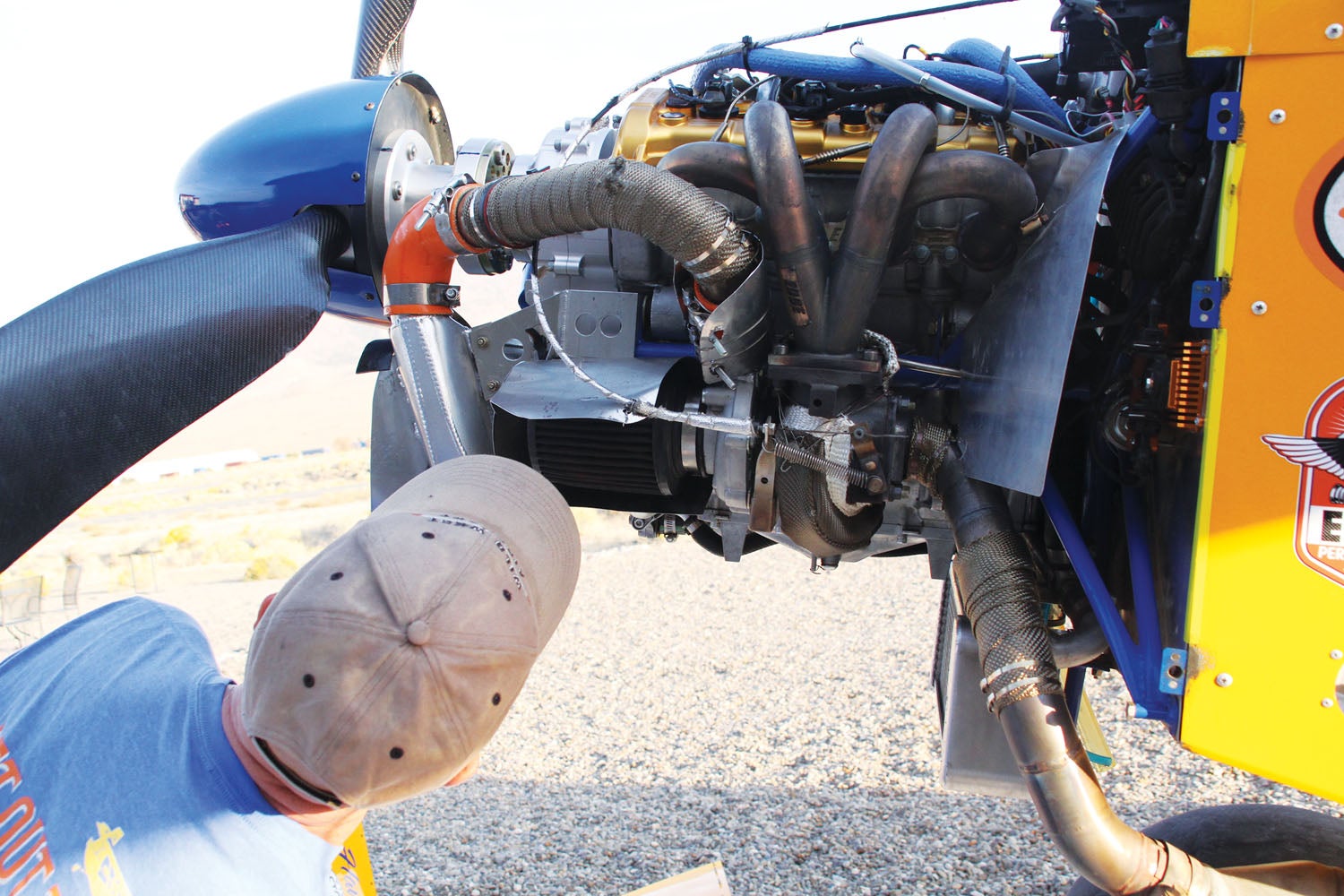
Now we’re the first to admit that new engines—especially conversion engines—have a tough job to prove their longevity and reliability in the field. The old, established aviation motors took half a century of use in tens of thousands of airframes before words like “bombproof” started to be applied to the basic engines. So being skeptical is a good thing. But we have to admit that progress is made when people take a step closer to the risk line, and so far the powerplant looks promising.
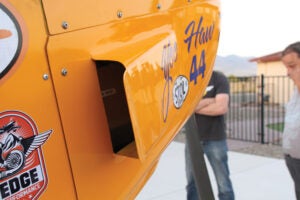
Of course, horsepower is not free, and the laws of physics have to be obeyed, so with hefty throttle settings come equally hefty fuel flows. Full-throttle gallons-per-hour was reported to be in the mid-20s—but at least it can (and does) burn 91-octane auto gas as easily as 100LL.
When asked for a package price, we of course, received the standard “that depends” on things like actual configuration and options, but $23,000 was mentioned as a ballpark figure.
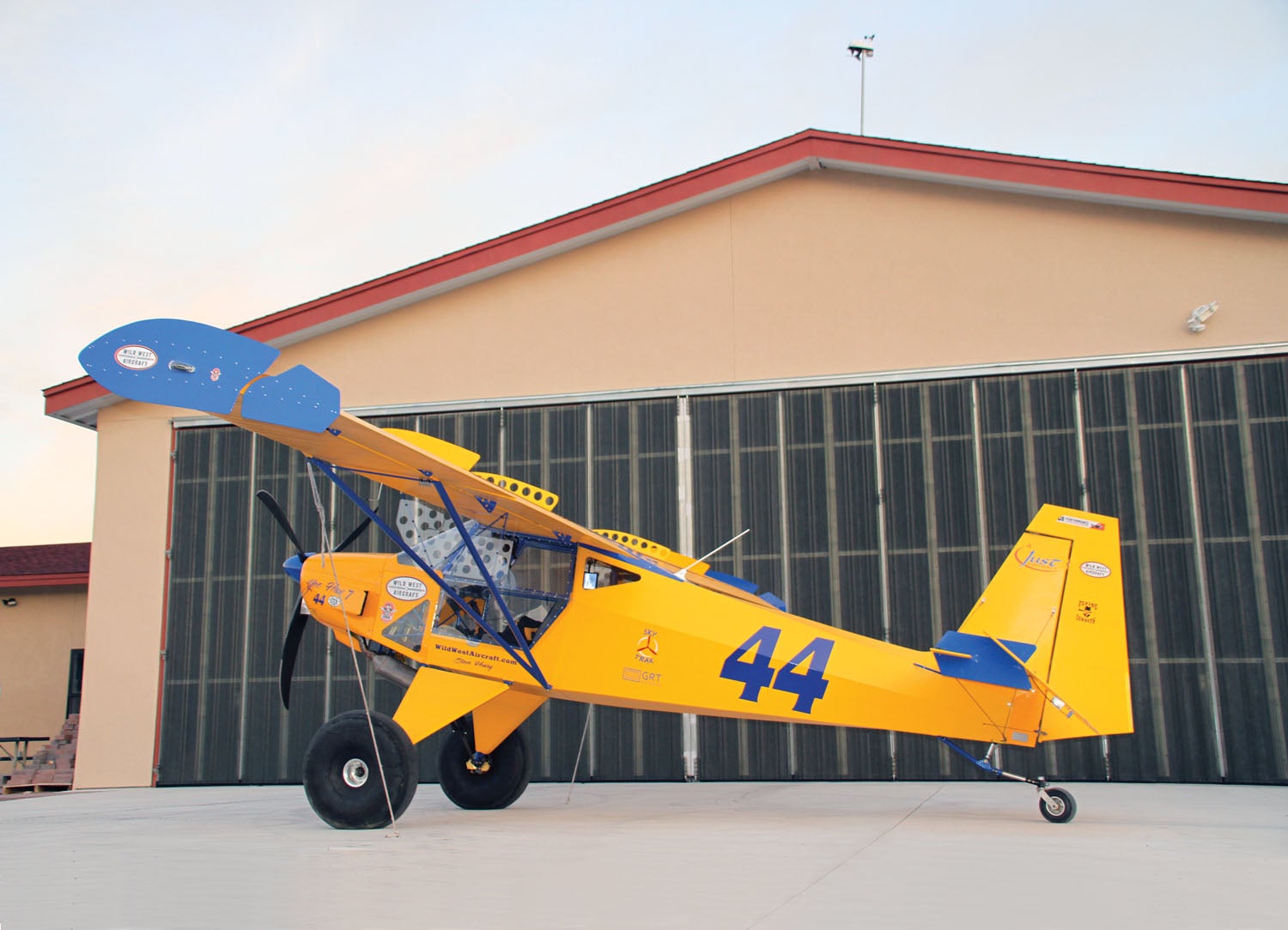
The Wing
Once you get over gawking at the excessive power production of the motor, you pick your jaw up off the floor and start looking at the airframe. The most obvious change to the basic Highlander design is a brand-new, custom-designed wing. Henry used a Harry Riblett airfoil and the original Highlander spars, but just about everything else came from his own ideas. Most noticeable is the fact that the flap and aileron chords are about a third of the entire wing chord—the surfaces are pretty large, to say the least. The flaps have quite a bit of travel and are controlled from the cockpit through a standard cable system, but the handle uses a hydraulic system to lock and release them in essentially any position, rather than having mechanical detents that limit you to just a few positions.
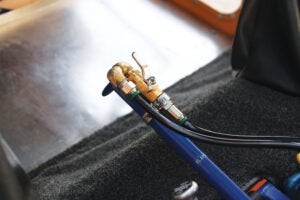
The wings are conspicuously void of leading edge devices so common on STOL airplanes these days. No slats—either fixed or moving—and no significantly noticeable humps or bumps. They do feature large stall fences on the upper surfaces, however, as well as vortex generators in strategic locations to keep the flow attached and going where Henry wants it.
Henry’s goal was to provide better STOL capability without a loss of top-end speed. He said he does like three-digit speeds (in mph) and doesn’t want to sacrifice the ability to go cross-country without growing old in the process. He admits that while he did see an improvement in STOLishness, the gains were minimal, and he might not build his next plane with the same wing design, coming to the conclusion that the Highlander wing is probably just as good a platform to begin with if you’re going to add other devices and toys.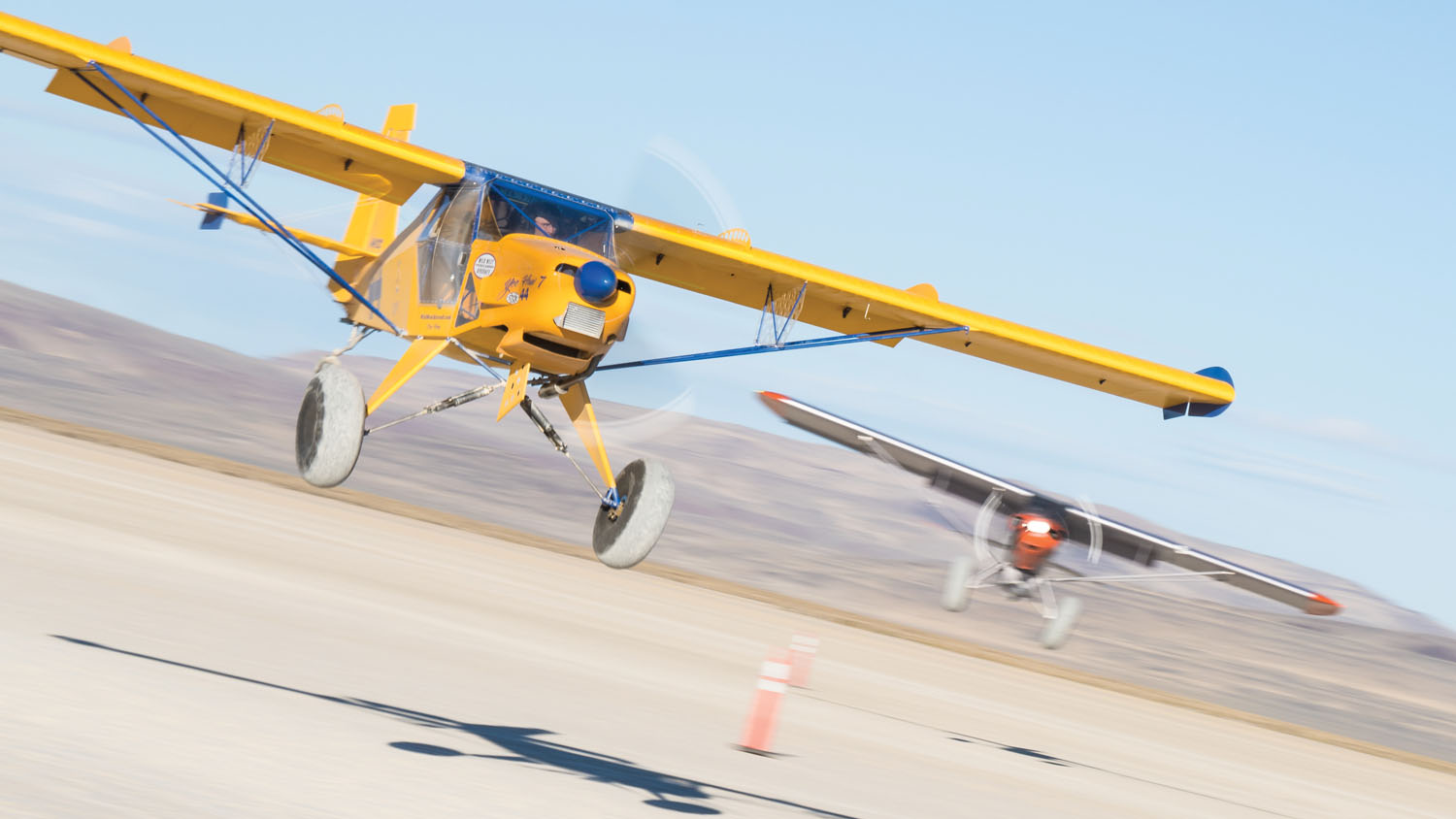
You Have to Stick the Landing (Gear)
Flying slow so that you can land short doesn’t do you any good if you can’t stick the landing. A big bounce not only looks bad, but also adds to landing distance if you have to add power to get things back under control. It might even force a go-around. Henry knew this, and it’s why he incorporated gear legs and shocks from Shock Monster, a company based in Lincoln, California, that is rapidly becoming known for its extreme landing gear.
The ideal landing gear is one that can absorb the energy of landing and not put it back into the airplane to lift it back off the runway. In our brief experience flying with Henry, we think the gear that Shock Monster provided for the Highlander does just that. I like to describe it by saying that the landings “just went squish.” There was no feeling that a rebound was imminent, but it also didn’t feel like the gear was going to collapse. It just worked.
That is the main gear of course—the tail spring on Yee Haw 7 is stock Highlander, with a long-stroke shock absorber that disappears into the fuselage structure, allowing radical touchdowns with no rebound. The tailwheel is a squared-off, but bulbous, tire on a full-swivel yoke. There was no doubt it worked well in Henry’s hands, and it stood up to whatever he needed to do to it.

Always Tinkering
We have to admit that the first thing we noticed as Henry taxied up in the Yee Haw 7 were a set of clear plastic panels mounted to each set of jury struts. Aligned with the direction of travel, they were filled with holes that looked to be about two inches in diameter. In normal flight they are invisible to the air—but throw the airplane into a sideslip and they looked to the oncoming air molecules like huge speed brakes—just like what you might find on an old WW-II dive-bomber. Part of the challenges of the STOL Drag competition is that not only do you have to go fast (it’s a race after all), but you also have to slow down quickly, and anyone that has seen the action knows just how extreme the slips get when it comes time to slow down and land. These drag devices were added just a week before we saw the airplane on its way to the High Sierra Fly-In—yet another attempt to stay on top!
Henry’s other additions have been equally well thought out. For instance, the standard Highlander has the elevator push-pull tube mounted on top of the baggage floor. He put his underneath, creating a huge flat floor and baggage area that could hold a whole lot of whatever you might want to carry into the backcountry.

From drag devices to lift enhancers—from new windows to cooling ducts and radiators—Henry has continued to add improvements to his designs, and his is a plane to go to if you want ideas for how to improve any area of performance. This is one reason he won his second Silver Lindy at AirVenture 2019—not only for his workmanship, but for his innovation. In our opinion, it was well deserved.
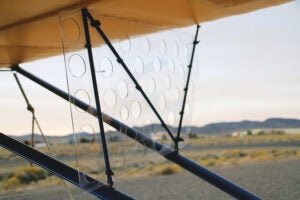
Going Wild
Steve Henry is a soft-spoken, interesting fellow with a lot to say—but he primarily lets his airplanes do the talking. A late-in-life pilot (he didn’t start flying until he was in his 40s), he thinks things over carefully and applies common sense to problems to find solutions. Nothing he does is magic—but he’s willing to work hard to prove his ideas, and the fact that he is on his seventh airplane is proof that he is constantly coming up with more of those ideas.
Whether it’s flying for pure STOL performance at AirVenture, or flying the STOL Drags at Reno or the High Sierra, Henry’s airplanes are something to contend with. And we think we’d love to give one a try out of the limelight, just loaded up for a camping trip to some backwoods strip. Or better—no strip required—just find a few hundred feet of clearing and go for it. This airplane is the nearest thing we’ve seen to a helicopter with fixed wings.
Websites
- Steve Henry www.wildwestaircraft.com
- Engine Provider www.badasspowersports.com
- Engine Engineering www.edgeperformance.no














Hello M HENRY
I live in France near Grenoble
I am interested in your device used in the championship
Can I buy the same device?
Is it possible to have it delivered to France in a sea container?
Is it possible that you assemble it and adjust it yourself?
If all of this is possible, can you tell us how much it will cost?
Looking forward to your response,
Best regards
Jean-Claude COLAS